N.S. CLASS AIRSHIPS
With an increasing requirement for the Royal Naval Air Service to provide aerial cover the fleet, the North Sea class airships were introduced in 1917 as a temporary solution until large rigid airships came into service.
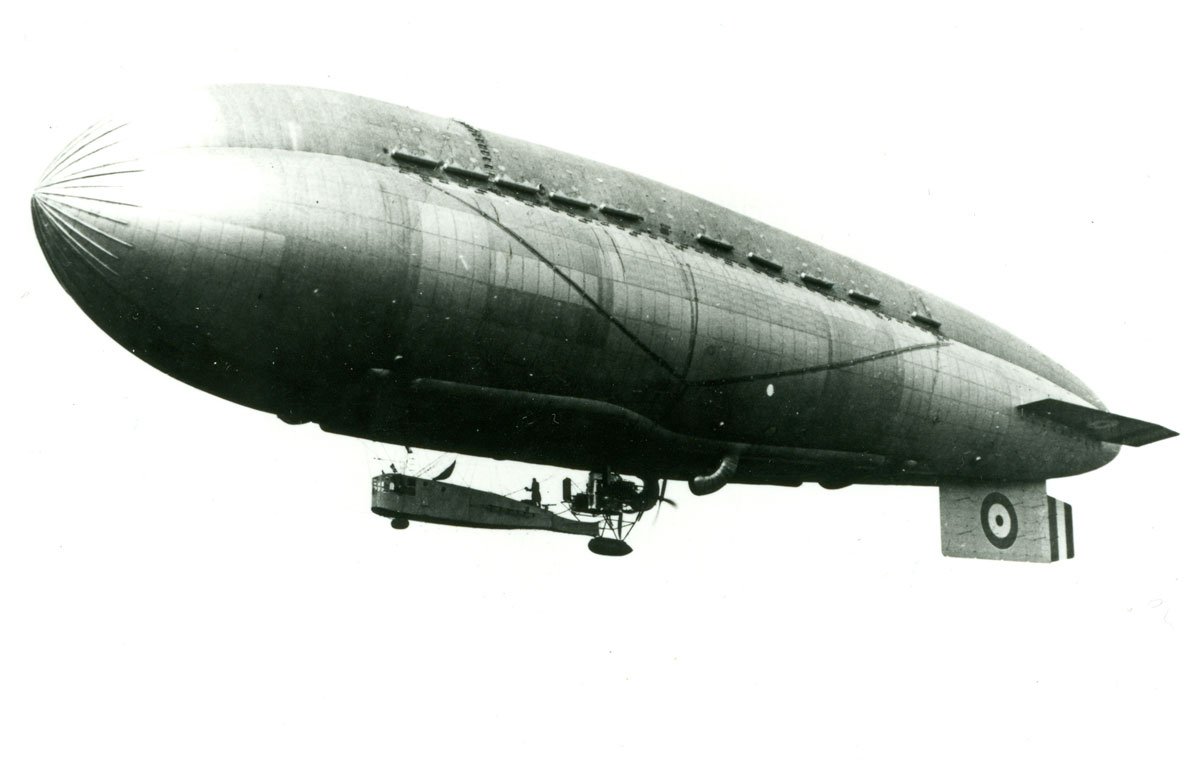
N.S.1 – the first North Sea Airship. Image: NS11.org.
The NS class airships were designed with a capability to carry out flights of considerable duration (24 hours) with a speed of 55 to 60 knots while providing comfortable accommodation for the double crew and a high degree of reliability. The first British-designed non-rigid airships to feature a fully-enclosed cabin, the North Sea class was designed to operate off the east coast of Great Britain and undertake anti-submarine and convoy escort duties.
The first five NS class airships suffered from serious drive-shaft issues which resulted in the forced landing and wrecking of N.S.2 and N.S.5. Production was halted until the two 250hp Rolls Royce Eagle engines, with their complex and problematic drive-shaft arrangement, were replaced with direct-drive 240hp Fiat engines. Once the dedicated RNAS personnel (particularly Flight Commander JS Wheelwright and Lieutenant-Commander AS Abell) had ironed out these problems, and following extensive modifications, the NS Class airships proved to be perhaps the finest and most efficient non-rigid airships in the world.
Based on the Astra-Torres principle the 262ft long streamlined tri-lobe envelope had a capacity of 360,000 cubic feet. The 35ft long control car (as on NS11 but not the Wheelwright-designed ships) was constructed from steel tubes covered in duralumin sheet and fabric. This housed the forward pilot’s cabin, navigation room and wireless telegraphy room as well as officer and crew living and sleeping accommodation (the crew of 10 was split into two watches of five). Cooking was done on a flanged hot-plate fixed to one of the engine exhausts.
Astern of the control car, and reached by an open walkway, was the engine car with the engines mounted either side. The cars of many of the airships were later modified to either the Kingsnorth-style (as was NS11) or the fully-enclosed Wheelwright-style car. Up to five machine guns could be fitted, with one on the upper platform reached through a climbing shaft. Up to six 230lb bombs were also carried.
Petrol was originally carried in aluminium tanks mounted on the top ridges of the envelope but this system was abandoned owing to the aluminium pipes fracturing dues to expansion and contraction of the envelope. The fuel tanks were subsequently mounted inside the envelope.
The NS Class airships, and in particular N.S.11, became well-known for breaking flight endurance records for, what were then, unprecedented durations.
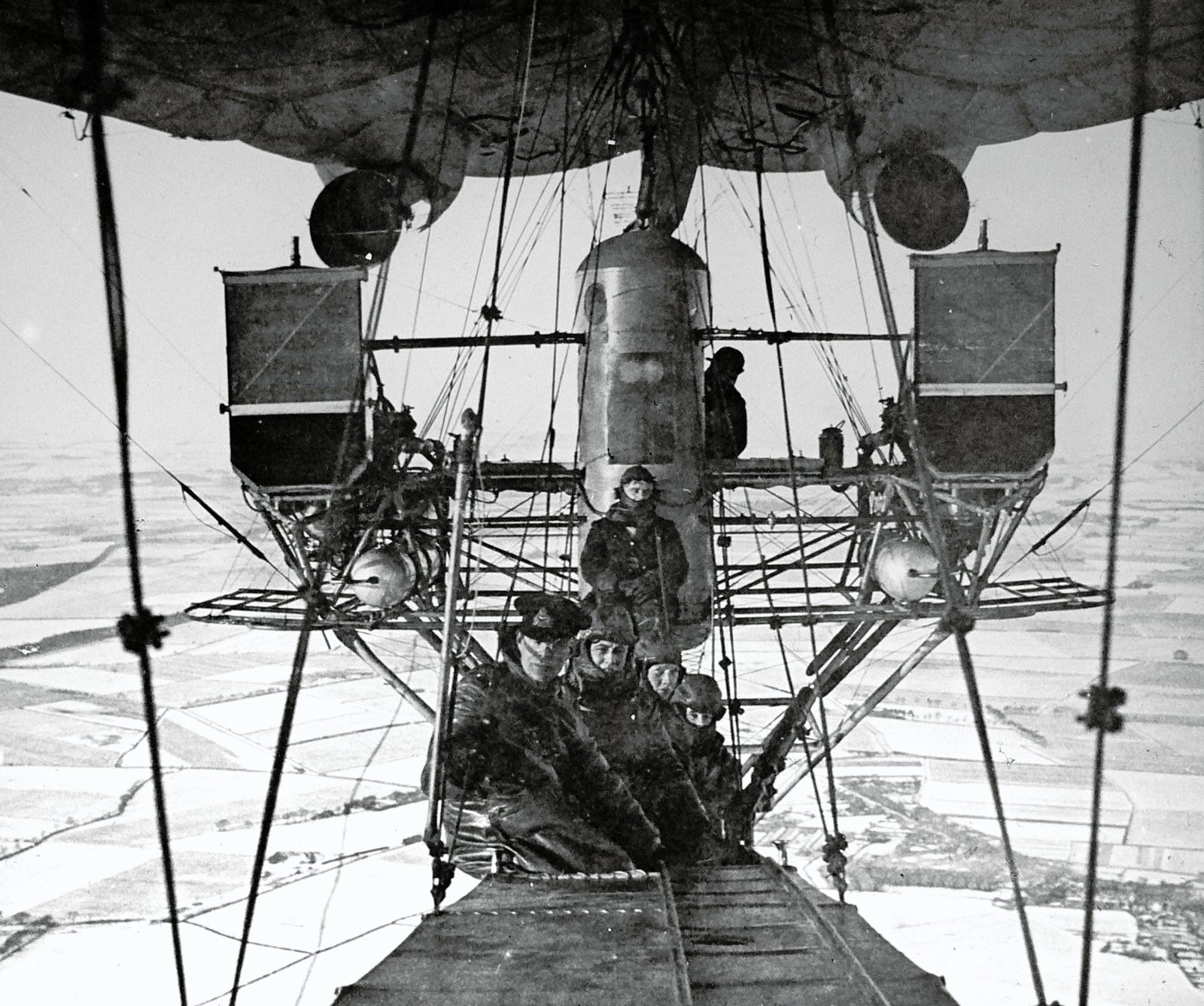
On board a Rolls Royce-powered N.S. Class airship in winter, possibly N.S.4. Image: NS11.org.
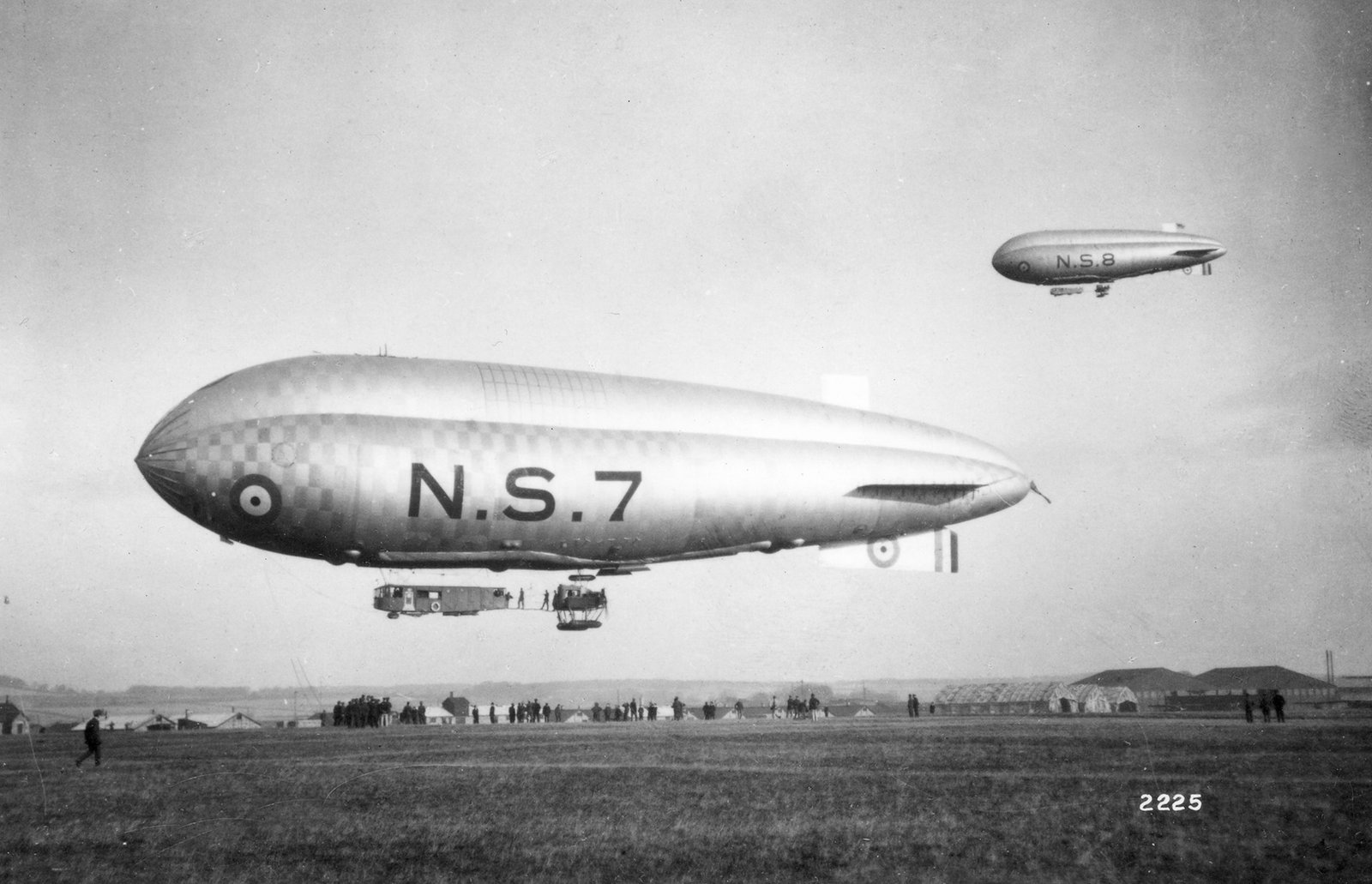
N.S. 7 and N.S.8. Image: NS11.org.
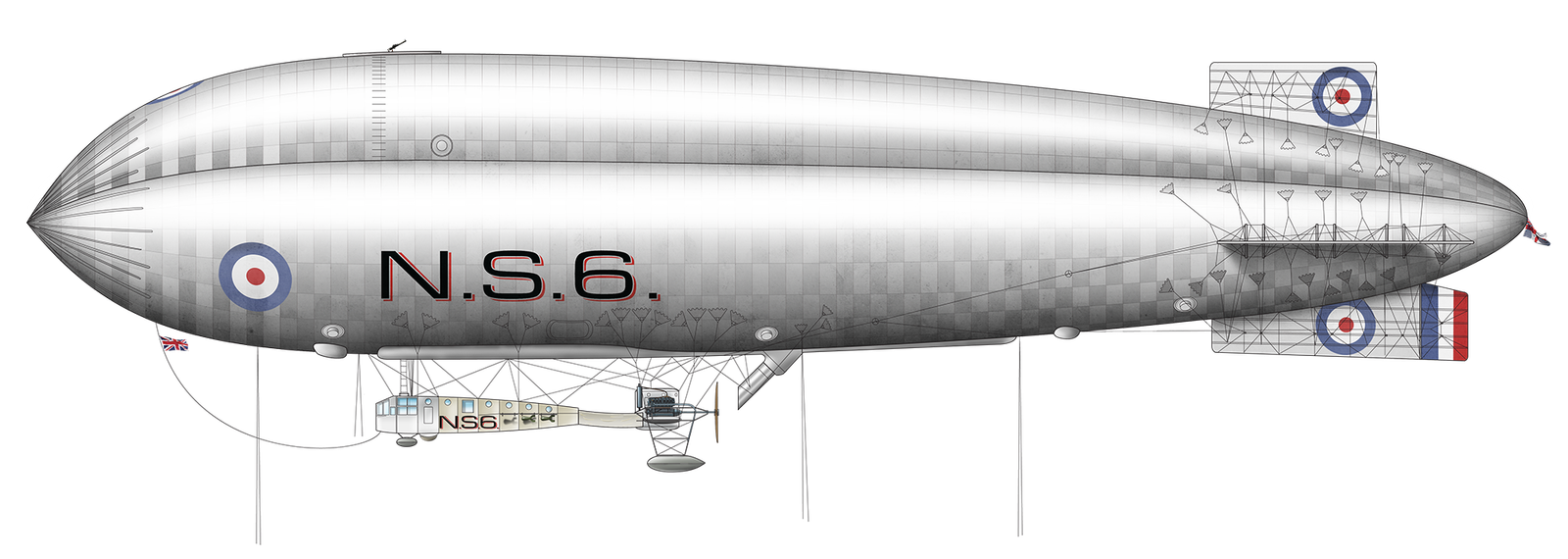
N.S. 6 with earlier configuration of the control and power car than N.S.11.
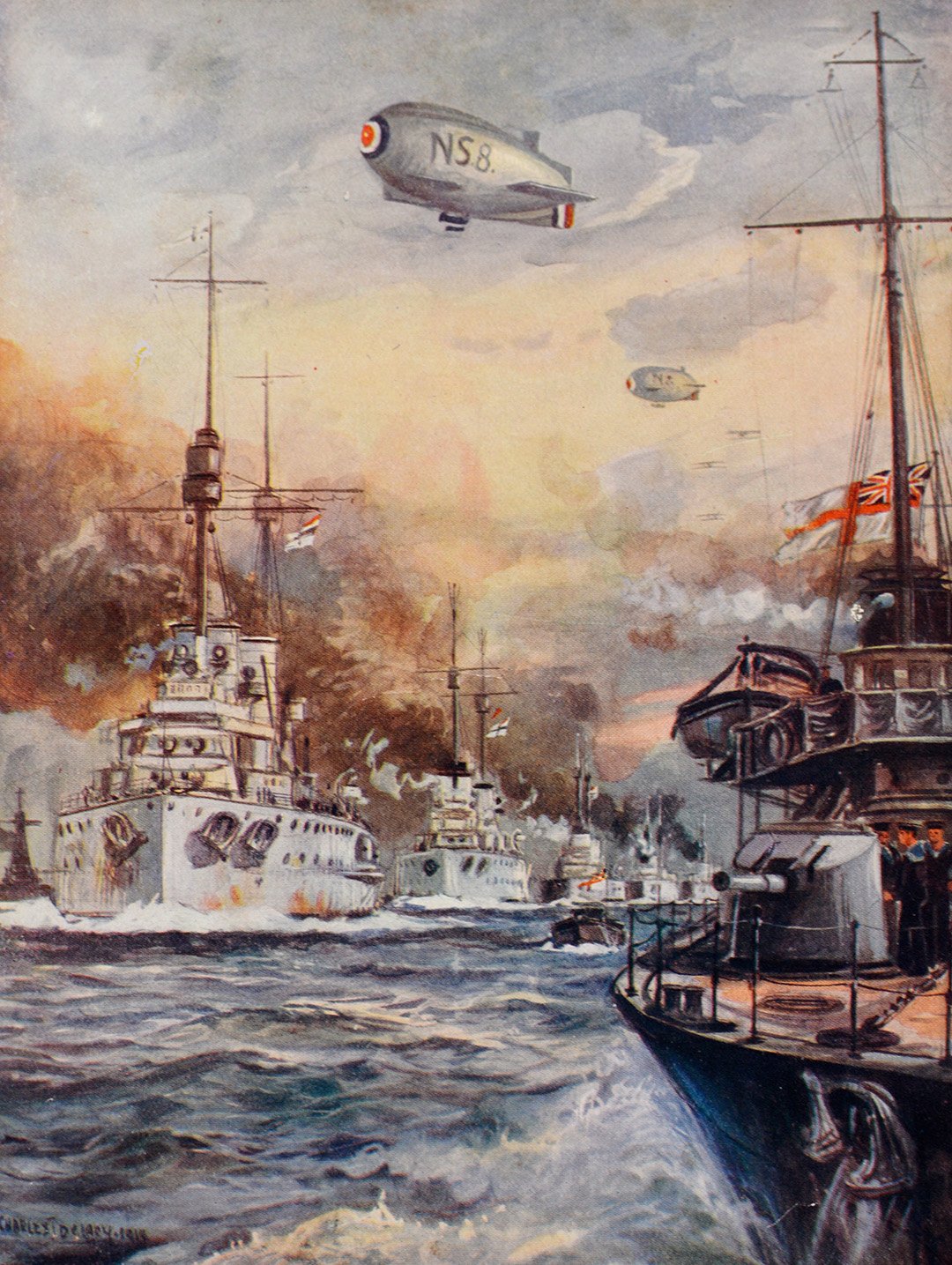
Illustration from The Wonder Book of the Navy from the early 1920s depicting N.S.7 amd N.S.8 at the surrender of the German High Seas Fleet on 21st November 1918. Image: NS11.org collection
In total 14 NS class blimps were constructed. The extended endurance flights and records broken were simply the result of normal operational flying routine while escorting convoys, hunting for submarines and performing other duties with the Fleet, and due to their success in modified form they were regarded as being probably the best large non-rigid airship that had been produced by any country.

Size comparison between the British rigid airship R.34, the non-rigid N.S.11, and the Submarine Scout Zero S.S.Z.11 Illustration: NS11.org

Although the NS-class airships were significantly smaller than rigid airships of the time, they were still extremely large – something difficult for those who have not encountered an airship of any kind. here is a size comparison between an NS-Class airship and A380-800. Illustration: NS11.org